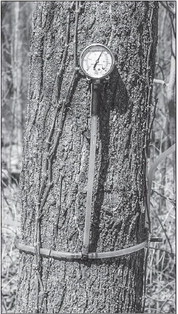tap up to three to ….


tap up to three to four thousand trees. A quick, cursory glance at his operation shows lines of plastic piping zig-zagging through the woods that surround the former dairy farm.
...

tap up to three to four thousand trees. A quick, cursory glance at his operation shows lines of plastic piping zig-zagging through the woods that surround the former dairy farm.
...